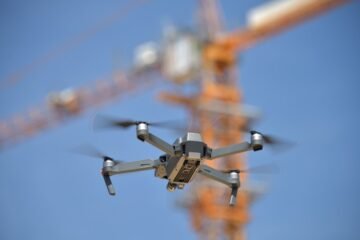Plumbing is an essential aspect of modern life, playing a crucial role in our homes and businesses’ comfort, convenience, and hygiene. As society evolves, so too does the plumbing industry, constantly adapting to meet new challenges and embrace innovative solutions. In recent years, the pace of technological advancement has accelerated, bringing forth a wave of cutting-edge innovations that are transforming the way we think about plumbing. This article aims to explore these exciting developments and their impact on the industry, highlighting the key trends and technologies that are shaping the future of plumbing.
The Role Of Smart Home Systems & Plumbing
One of the most significant trends in the plumbing industry is integrating smart home technology into plumbing systems. Smart home systems offer homeowners unprecedented control and monitoring capabilities, enabling them to manage their water usage more efficiently and proactively address potential issues.
Key innovations in this area include:
- Smart water leak detectors: These devices use sensors to detect the presence of water in unexpected locations, such as under sinks or near appliances, and alert homeowners via smartphone notifications. Early detection of leaks can prevent extensive damage and costly repairs.
- Automated water shut-off valves: Connected to the main water supply, these valves can automatically shut off the water in case of a detected leak or when prompted by the homeowner remotely. This feature provides an added layer of protection against water damage and waste.
- Smart irrigation systems: These systems use weather data, soil moisture sensors, and programmable schedules to optimize outdoor watering, ensuring that plants receive the right amount of water while minimizing waste.
Smart home systems’ benefits in plumbing include improved efficiency, convenience, and water conservation. As Jamie St. Pierre, Cofounder of T&J Rooter Service Plumbing and Drain Cleaning in Toledo, Ohio, states, “Smart home systems are revolutionizing the plumbing industry by providing homeowners with unprecedented control and peace of mind over their water usage.”
Eco-Friendly Plumbing and Drain Materials
Another significant trend in the plumbing industry is the shift towards sustainable and eco-friendly materials. As environmental concerns continue to grow, both consumers and industry professionals are seeking out solutions that minimize the ecological impact of plumbing systems.
Innovative materials in this category include:
- PEX piping (cross-linked polyethylene): This flexible, durable, and resistant piping material is becoming increasingly popular as an alternative to traditional copper or PVC pipes. PEX piping is easier to install, less prone to leaks, and more resistant to freezing temperatures.
- Recycled and recyclable plumbing components: Manufacturers are developing plumbing fixtures and components made from recycled materials, such as recycled brass or plastic, to reduce their products’ environmental footprint. Additionally, many components are designed to be easily recyclable at the end of their lifespan.
- Non-toxic sealants and adhesives: Traditional plumbing sealants and adhesives often contain harmful chemicals that can pose health risks and contribute to indoor air pollution. New, non-toxic alternatives are being developed to provide safer and more environmentally friendly solutions.
The benefits of eco-friendly materials extend beyond environmental sustainability, also encompassing improved health safety and durability. As the demand for green building certifications and eco-friendly renovations continues to rise, the plumbing industry is adapting to meet these evolving expectations.
Water Conservation Techniques
Water conservation has become a critical issue in the plumbing industry, as concerns over water scarcity and the need for sustainable practices grow. Plumbing professionals are increasingly focused on implementing techniques and technologies that promote the efficient use of water resources.
Key water conservation techniques include:
- Low-flow fixtures: Toilets, faucets, and showerheads designed to use less water per flush or minute of flow can significantly reduce overall water consumption without compromising performance. Many municipalities now require the use of low-flow fixtures in new construction and renovations.
- Greywater recycling systems: These systems collect water from sources such as showers, laundry machines, and bathroom sinks, and treat it for reuse in non-potable applications, such as toilet flushing or landscape irrigation. By recycling greywater, households can substantially reduce their reliance on freshwater resources.
- Rainwater harvesting systems: Capturing and storing rainwater for later use in irrigation or other non-potable applications can help reduce the demand on municipal water supplies. Rainwater harvesting systems can range from simple rain barrels to more complex underground storage tanks with filtration and pumping components.
The impact of these water conservation techniques can be significant, leading to a substantial reduction in water usage and utility bills. Case studies of successful water conservation implementations in both residential and commercial settings demonstrate the potential for these strategies to make a meaningful difference in our collective water footprint.
Advanced Plumbing Technologies
In addition to smart home systems, eco-friendly materials, and water conservation techniques, the plumbing industry is witnessing the emergence of several other cutting-edge technologies that are transforming the way plumbing services are delivered.
Notable innovations in this area include:
- Trenchless pipe repair and replacement: Traditional pipe repair and replacement methods often involve extensive excavation, which can be disruptive, time-consuming, and costly. Trenchless technologies, such as pipe lining and pipe bursting, allow for the repair or replacement of damaged pipes without the need for extensive digging, minimizing the impact on surrounding structures and landscapes.
- Hydro-jetting for drain cleaning: Hydro-jetting involves the use of high-pressure water jets to clear clogs and debris from drain lines. This technology is more effective and efficient than traditional drain snaking methods, as it can remove buildup from pipe walls and reach further into the plumbing system.
- Thermal imaging for leak detection: Thermal imaging cameras can detect temperature variations in walls, floors, and ceilings, helping plumbers pinpoint the location of hidden leaks without the need for invasive exploratory work. This technology can save time and minimize damage during the leak detection process.
These advanced technologies offer numerous advantages, including less invasive procedures, cost-effective solutions, and more accurate diagnoses of plumbing issues.
Challenges and Considerations Of New Plumbing Technology
While the adoption of new technologies in the plumbing industry brings many benefits, there are also challenges and considerations that must be addressed.
The associated cost is one potential barrier to the widespread adoption of new technologies. Some advanced plumbing solutions, such as smart home systems or trenchless pipe repair, may require a higher initial investment compared to traditional methods. This can make it difficult for some homeowners or businesses to justify the expense, particularly if they are not fully aware of the long-term benefits.
Another challenge is the need for ongoing training and education for plumbers to stay current with new technologies. As the industry evolves, plumbing professionals must continually update their skills and knowledge to effectively install, maintain, and repair these advanced systems. This requires a commitment to professional development and a willingness to adapt to change.
Looking to the future, it is clear that adopting new technologies in the plumbing industry will continue to accelerate. As more consumers become aware of the benefits of smart home systems, eco-friendly materials, and water conservation techniques, the demand for these solutions will likely grow. Additionally, as the cost of these technologies decreases over time and more plumbers become proficient in their use, the barriers to adoption will gradually diminish.
Embracing the Future of Plumbing: A New Era of Innovation and Sustainability
The plumbing industry is undergoing a significant transformation, driven by a wave of innovative technologies and a growing awareness of the need for sustainable practices. From smart home systems that provide unprecedented control and monitoring capabilities to eco-friendly materials that reduce the environmental impact of plumbing systems, these advancements are reshaping the way we think about plumbing.
As we look to the future, it is clear that embracing these new technologies will be essential for plumbing professionals to remain competitive and meet the evolving needs of their customers. By staying current with the latest innovations, plumbers can improve efficiency, promote sustainability, and enhance customer satisfaction, all while contributing to a more resilient and responsible built environment.
The future of plumbing is exciting, and the potential for positive change is vast. As the industry continues to evolve, it will be crucial for plumbing professionals, manufacturers, and consumers alike to work together to harness the power of these innovative technologies and create a more sustainable, efficient, and convenient plumbing landscape for generations to come.




